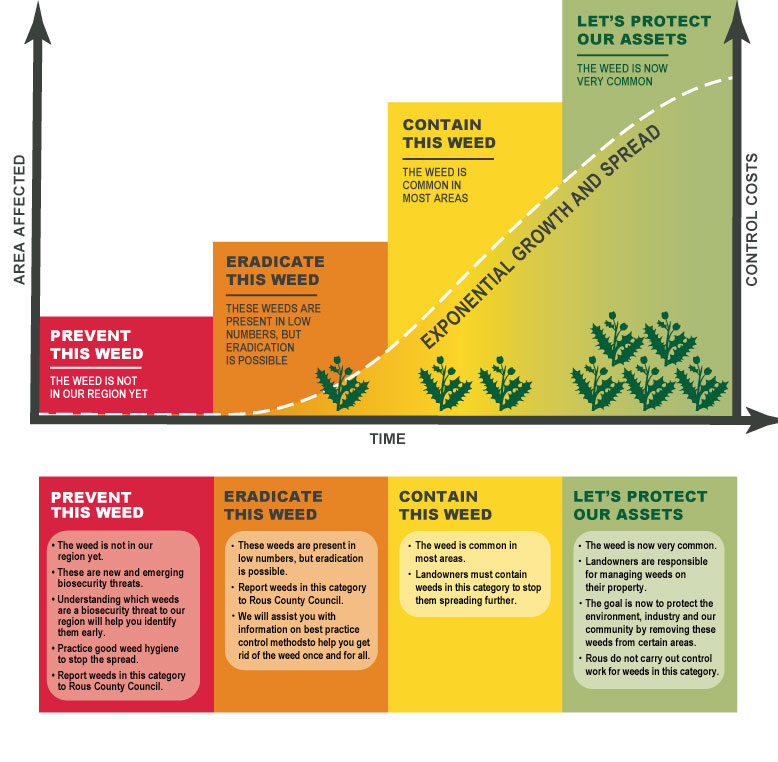
Home » Weed biosecurity » Weed information » What is a weed?
What is a weed?
The diagram below illustrates the importance of rapidly responding to new and emerging weeds, while preventing introduction of new weeds to our region.
The higher the weed on the invasion curve, the more negative impacts it will deliver to our economy, environment and social values.
Council’s weed management program targets weeds in the prevention, eradication and containment stage in line with the diagram below.
Council continues to undertake strategic control projects for new and emerging weeds across the county. This includes inspection of high risk areas to ensure new weed incursions are detected and controlled early, before they are allowed to establish.
Weed invasion curve

A weed is a plant growing where it is not wanted: Couch in a couch lawn is not a weed, but once it spreads into the garden it is a weed.
Weeds require some form of action to reduce their effects on the economy, the environment, human health or amenity (NSW Biosecurity and Food Safety Strategy).
Weeds are often classed into broad groups depending on their characteristics and impacts. The main groups are:
-
General biosecurity duty
-
Prohibited matter
-
Control orders
-
Biosecurity zones
-
Mandatory measures.
Many weed species can be classified in more than one of these groups.
Weeds are often grouped by where they are growing, e.g. pasture weeds, lawn weeds, water weeds, environmental weeds, etc.
Sometimes they are grouped by their origin: Garden escapes, natives, exotics, etc.
Plants often become weeds because they spread rapidly, out-compete other plants, are prolific seeders and are invasive, costing the Australian community in excess of $3 billion a year. Over two thirds of our weeds were introduced legally for ornamental purposes. Every year at least 12 new species become naturalised somewhere in Australia. Of these, at least four become significant or major weeds.
Weeds are a problem because they have one or more of the following undesirable properties: They out-compete other species, are harmful to stock or humans, taint or contaminate produce, cause allergies, increase fire hazards, interfere with agricultural practices, cause or encourage soil erosion, look unsightly, cause damage to the natural environment and waterways.